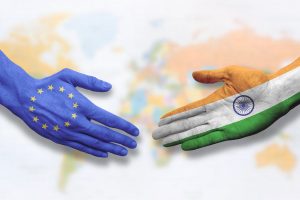If winters are here, can spring be far behind”, the classic P.B Shelly line aptly sums the ethos of India’s Makar Sankranti celebrations. Celebrated on the 14th of January, Makar Sankranti is the harvest festival that is marked by the suns’ shift in position.
Around 14th January, the Sun enters Capricorn (Makar in Hindi and Sanskrit) and starts on its Northward journey, a transition called Uttarayan in Sanskrit. During the last quarter of the year, when the sun is traveling towards the south, crop harvesting takes a backseat because of limited sunlight and harsh weather conditions. This is why when the sun embarks upon its journey to the north, it makes for a celebratory occasion for not just the agricultural community but for the entire country that had been struggling with the winter gloom.
Advertisement
Makar Sankranti celebrations coincide with many harvest festivals celebrated across the country during the same time with unique regional variations. Lohri in Punjab, Pongal in Tamil Nadu, and Bhogali Bihu in Assam are all harvest festival that marks the significant shift in a season that happens around this time.
To celebrate the joy, various dishes are prepared. Consuming til(sesame) and gud(jaggery) are said to be auspicious on Makar Sankranti. Sweets are prepared in every household with these two ingredients that the family savors and also distribute to friends & relatives.
The combo of Til and Gur comes from the Maharasthian phrase ‘Til, gud khaya ni god bola’. This is a common expression used to greet family and guests in Marathi households during Sankranti celebrations. The expression means ‘Eat til and gur and speak sweet’.
While Til or sesame seeds provide warmth to the body, Gur, or jaggery is the perfect sugar replacement. Sesame seeds also strengthen bones, boost hair quality, control blood sugar and keep skin healthy, as they are loaded with protein, calcium, iron, and magnesium. Jaggery, on the other hand, activates digestive enzymes which makes the process easier. It is rich in iron which purifies blood, while minerals like zinc and selenium prevent early aging. The combination of Til and Gur also boosts immunity and guards the body against seasonal infections.
Sankranti celebrations may differ from household to household, community to community but til or gur preparations are something common to several Sankranti celebrations. Be it Maharashtra’s Til Papdi, Tilcha ladoo, and Puran Poli, or Bengal’s Patishapta, Moa (laddoos made of puffed rice and jaggery), Nolen Gure Payesh or the til revdis from Punjab and up north, the Sankranti feast is one lavish affair we can brave the harshest of winters for.











